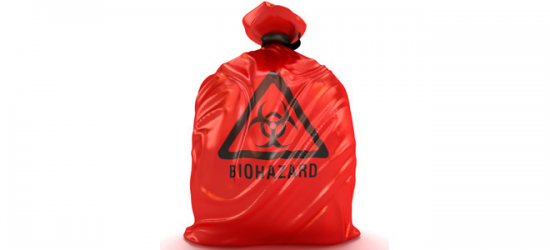Biohazardous Waste
Biohazardous Waste
The proper identification, packaging and decontamination of biohazardous waste is the responsibility of the generator of the waste. Laboratory users (faculty, staff and students) are responsible for submitting a work order to EHS for pick-up of the biological waste. Examples materials defined as biohazardous waste include:

- Pathological waste
- Sharps waste
- Biological waste: Human and nonhuman primate blood, tissue, body fluids and cell lines
- Cultures or stocks of infectious agents, including bacteria, fungi, viruses, protozoa, parasites, prions and select agents, attenuated vaccines, etc.
- Recombinant or synthetic nucleic acids (rDNA), including waste products from procedures involving plasmids, viral vectors, E.coli, yeasts and naked nucleic acids
- Contaminated animal waste, carcasses and body parts that have been exposed to an infectious agent or rDNA.
- Laboratory waste items (e.g. used personal protective equipment like gloves, lab coats, and culture dishes, tubes) that have come into contact with an infectious agent but have not been decontaminated
- Plant waste, including all transgenic plants, seeds, spores, plant debris and soil materials, and any plants exposed to plant pathogens
- Pharmaceutical and Chemotherapy waste – materials that poses cytotoxic/antineoplastic properties or items that have come into contact with these chemicals.
Use the flowchart to determine waste disposal process (Click Here).
Environmental Health and Safety (EHS) will be able to assist with training, and provide guidance/help with any biological safety questions. If your research involves mixed waste such as mixture of biohazardous, chemical or radioactive materials, please contact EHS before initiating the research.
Last updated: 8/9/2021
